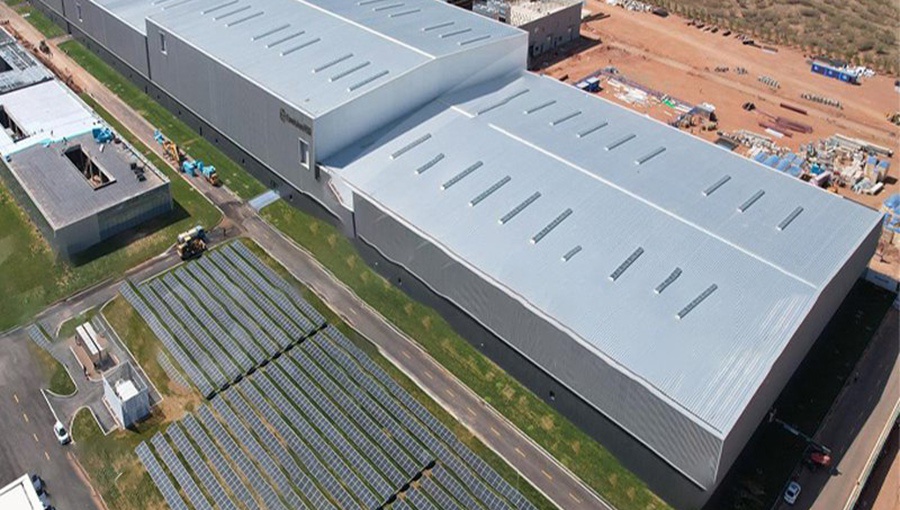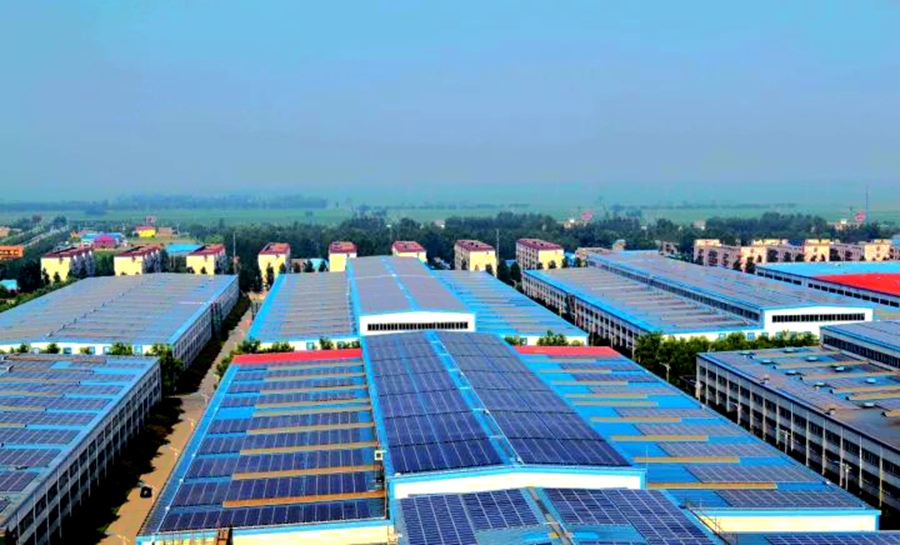In the field of photovoltaic sandwich panel manufacturing, LUSEN stands out with its superior quality and innovative technology, emerging as a leader in the industry. Today, let’s delve into LUSEN’s photovoltaic sandwich panels and their unique advantages.
The Unique Design of LUSEN’s Photovoltaic Sandwich Panels
LUSEN’s photovoltaic sandwich panels feature an innovative sandwich structure design that not only enhances product performance but also greatly facilitates installation and maintenance. Specifically, the product consists of several power generation units, each composed of a composite panel and a photovoltaic panel. The composite panel has a first skeleton, a second skeleton, a third skeleton, and a fourth skeleton arranged in a clockwise direction around its periphery. The first and third skeletons are both equipped with several first mating parts and several third mating parts that extend towards and mate with adjacent power generation units. In adjacent power generation units, the first mating part is fitted with a first sealing strip that contacts the third skeleton, and the third mating part is fitted with a third sealing strip that contacts the first skeleton. This design not only ensures structural stability but also effectively prevents the ingress of water and dust, extending the product’s service life.

The Convenience of Installation and Disassembly
Another significant advantage of LUSEN’s photovoltaic sandwich panels is the convenience of their installation and disassembly. The product is designed with a pre - embedded group, one end of which is embedded in the wall, and the other end extends upward vertically to form two top - holding parts arranged at intervals. Adjacent power generation units are respectively equipped with hooks that are hung on different top - holding parts of the same pre - embedded group, realizing the installation or disassembly of power generation units and walls through the hanging method. This hanging method not only simplifies the installation process but also makes maintenance and replacement much easier and quicker.
High - efficiency Photovoltaic Power Generation Performance
LUSEN’s photovoltaic panels in the sandwich panels adopt advanced photovoltaic technology, capable of efficiently converting solar energy into electrical energy. The photovoltaic panels have high conversion efficiency and good weather resistance, maintaining stable power generation performance even under harsh weather conditions. In addition, LUSE also focuses on the overall performance of the product, further improving the product’s thermal insulation and heat - insulating performance by optimizing the materials and structure of the composite panel, making it more advantageous in building applications.

Safety and Reliability Assurance
LUSEN always puts the safety and reliability of the product first. In the design and manufacturing process of its photovoltaic sandwich panels, it strictly follows international and domestic standards and has undergone strict quality inspection and certification. The product uses high - quality materials and advanced manufacturing processes to ensure the reliability and durability of each component. In addition, LUSEN also provides comprehensive after - sales service to solve the worries of users.
Leading Position in the Industry
In the field of photovoltaic sandwich panel manufacturing, LUSEN has won widespread recognition in the market with its innovative design, superior performance, and reliable quality. Its products not only occupy an important share in the domestic market but also are exported overseas, receiving trust and praise from global customers. With its strong R & D strength and innovation ability, LUSEN continues to promote the development of photovoltaic sandwich panel technology, providing better choices for building - integrated photovoltaic applications.
Conclusion
In summary, LUSEN’s photovoltaic sandwich panels, with their innovative design, convenient installation and disassembly method, high - efficiency photovoltaic power generation performance, and safety and reliability assurance, have become a leader in the photovoltaic sandwich panel manufacturing field. Whether for commercial buildings or residential projects, LUSEN’s photovoltaic sandwich panels can provide users with efficient, reliable, and aesthetically pleasing solutions, helping to achieve the goal of green buildings.


















